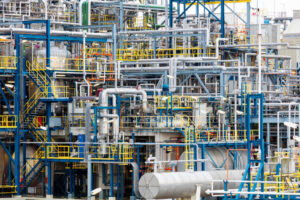Pipes can be defined as pipes made of metal, plastic, wood, concrete, or fiberglass.
Pipelines are used to transport liquids, gases, slurries, or small particles.
Pipeline systems are typically considered to include complete interconnections of pipelines, including online components such as fittings and flanges.
Pumps, heat exchangers, valves, and storage tanks are also considered as part of the piping system.
The pipeline system is the artery of our industrial process, and its contribution is crucial in industrialized society.
The following image illustrates the number of pipelines required for a typical chemical plant.
The pipeline system accounts for a large part of the total cost of the factory, sometimes even one-third of the total investment.
Pipeline systems arranged in very narrow areas may pose additional challenges to pipeline and support engineers.

The initial design of a pipeline system is determined based on the functional requirements for transporting fluids from one point to another.
The detailed design depends on standards, such as the type of fluid being transported, allowable pressure drop or energy loss, required speed, space limitations, process requirements (such as free discharge or straight pipe requirements), stress analysis, fluid temperature, etc.
Supporting the installation of pipeline systems requires a significant amount of engineering, design, manufacturing, and installation work.
In some cases, special structures (such as T-shaped or inverted L-shaped structures, cantilever beams, U-shaped inlets, bases, etc.) must only be constructed to support pipeline systems.

